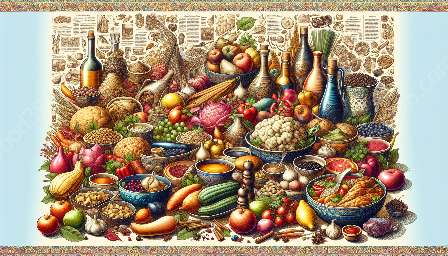The domestication of plants and animals played a significant role in shaping the evolution of food cultures and the development of early agricultural practices. This process led to the establishment of food traditions, societal changes, and the emergence of diverse cuisines.
Early Agricultural Practices and the Development of Food Cultures
Early agricultural practices were closely tied to the domestication of plants and animals. The shift from a hunter-gatherer lifestyle to settled farming communities was made possible by domesticating key plant and animal species. The cultivation of cereals such as wheat, barley, and rice, and the domestication of animals like sheep, goats, and cattle, allowed for the production of food on a larger scale.
This transition marked the beginning of food surpluses, which in turn led to a more stable and reliable food supply. As communities became more adept at cultivating and raising domesticated species, they developed specific food cultures influenced by the available resources and environmental conditions.
Impact of Domestication on Food Cultures
The domestication of plants and animals had a profound impact on the development of food cultures. It not only provided a consistent food supply but also influenced the way people prepared, consumed, and shared food. The cultivation of specific crops and the rearing of particular animals gave rise to culinary traditions and agricultural practices that varied from region to region.
Food culture evolved as different communities adapted to the resources available to them. For example, areas with abundant access to seafood developed cuisines centered around fish and other marine resources. In contrast, regions with fertile soil and suitable climate conditions focused on farming and cultivating staple crops, resulting in distinct agricultural and culinary practices.
Origin and Evolution of Food Culture
The origin and evolution of food culture can be traced back to the domestication of plants and animals. This transformative process contributed to the diversification of food habits and culinary traditions, shaping the cultural identity of various societies around the world. It influenced the development of cooking techniques, food preservation methods, and the sharing of knowledge related to farming and animal husbandry.
Furthermore, the exchange of food items and culinary practices between different communities facilitated cultural diffusion and the assimilation of new flavors and ingredients. As a result, food cultures continued to evolve through interactions and trade, leading to the fusion of culinary traditions and the innovation of new dishes.
Conclusion
The domestication of plants and animals was a pivotal factor in the evolution of food cultures and the development of early agricultural practices. It not only transformed the way people sourced their food but also gave rise to diverse food traditions and culinary customs. The impact of domestication on food cultures continues to shape our modern-day culinary landscape, reflecting the rich history and heritage of human societies.


